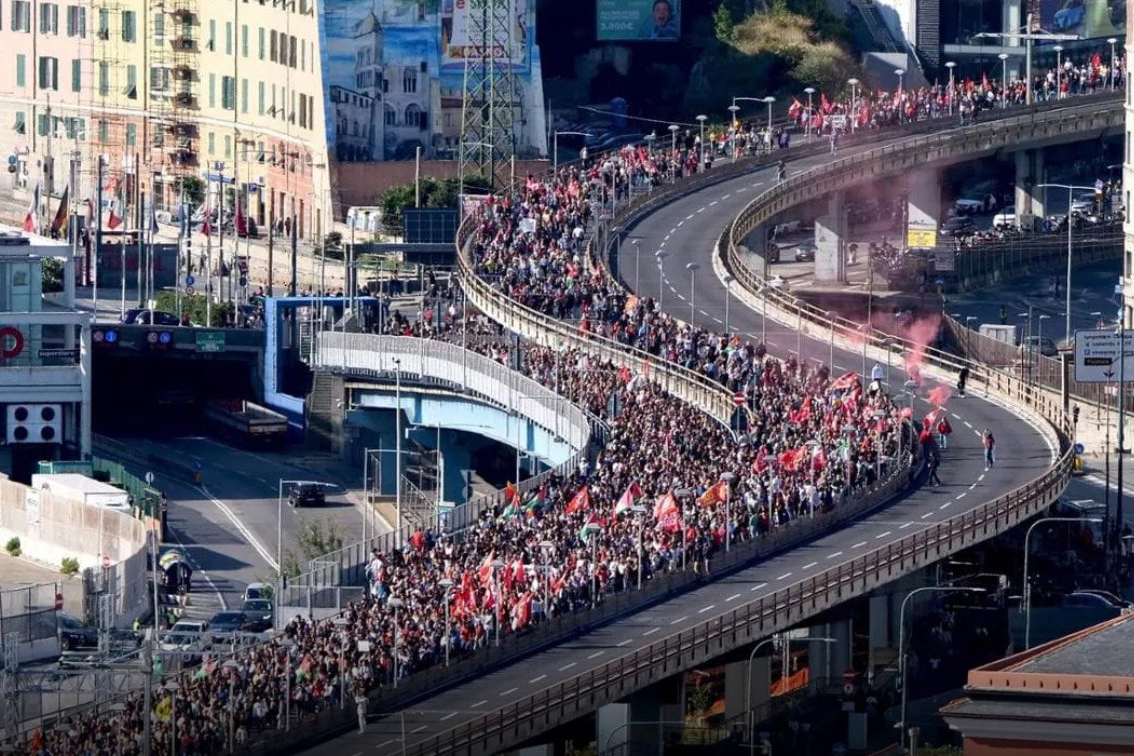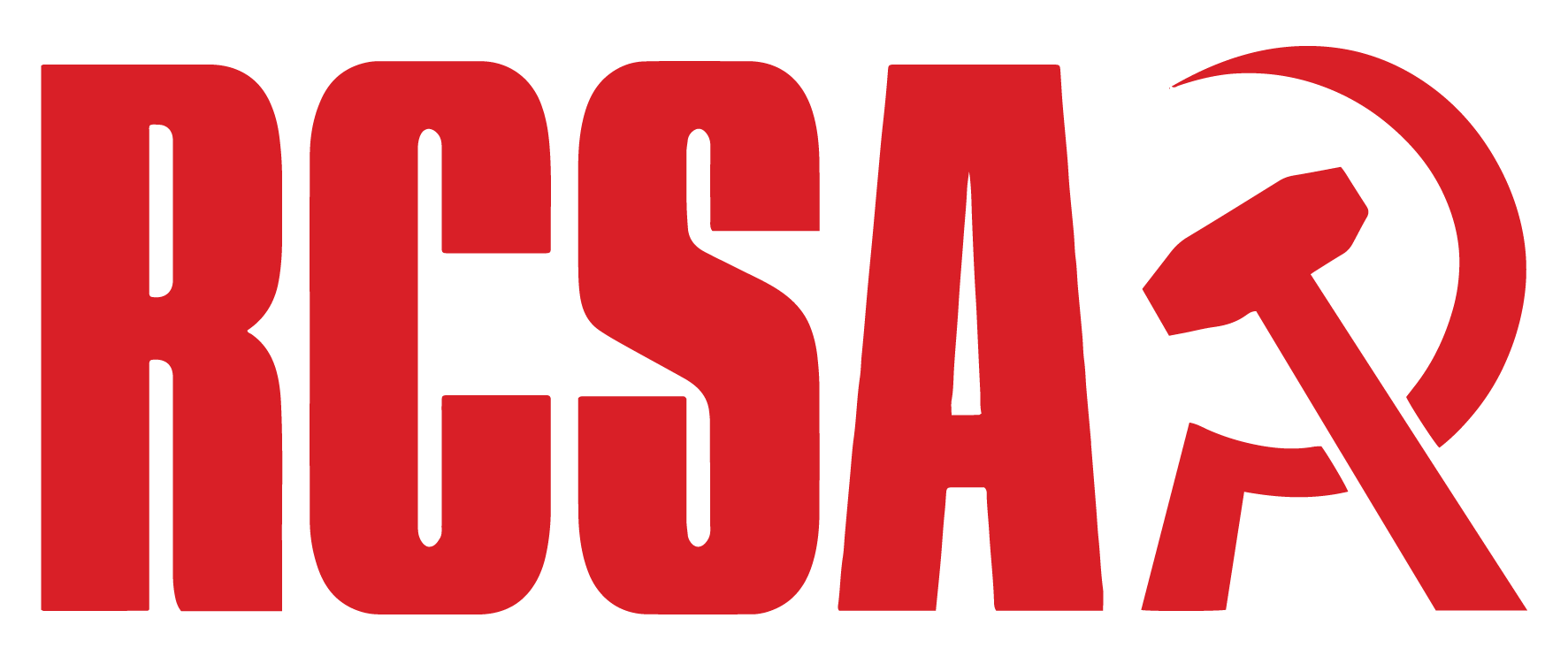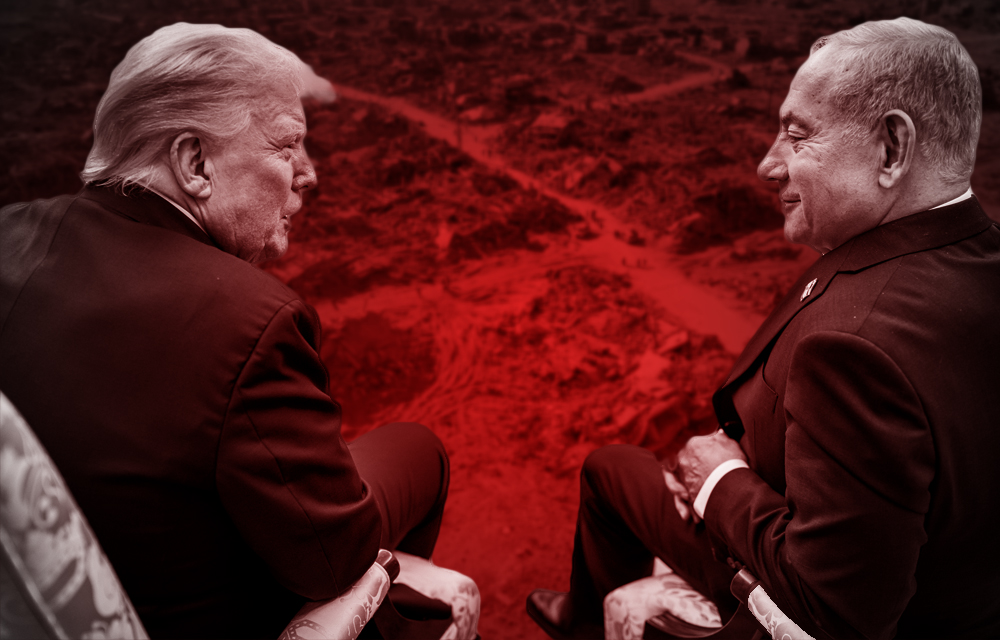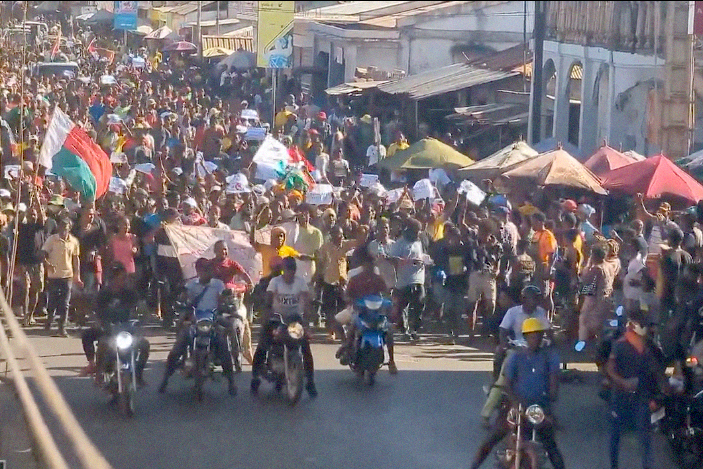[Alessio Marconi, Partito Comunista Rivoluzionario, 10 October 2025]
The general strike on 3 October was a historic leap forward for the Palestine movement and for the class struggle in general. A human tide poured onto streets across Italy: 300,000 in Rome, 150,000 in Milan, Naples, and Bologna, 100,000 in Florence. The list is too long for this article. In total, an estimated 2 million people took to the streets in at least 100 cities. The next day, 500,000 people flooded Rome again for the national demonstration.
[Originally published in Italian at rivoluzione.red]
Numbers like these have not been mobilised in decades – some say in 20 years, some say 50. But it isn’t just a question of numbers. A political strike of this magnitude to stand alongside a foreign people suffering genocide is unprecedented. And it is clear that the tensions accumulated over years of crisis, austerity, and sacrifice – which could not find an outlet – have exploded onto the streets.
What we are facing is therefore not a fleeting phenomenon, but a profound turning point that opens a new phase, if not a new era.
The scope of this movement transcends the borders of Italy: it is linked to a rise in revolutionary mobilisations worldwide and will, in turn, contribute to fuelling them.
The government flounders
In just over a month, from the march in Genoa on 30 August that launched the movement, to the general strike of October, the balance of power in society has been completely overturned. Now it is the government and the ruling class that are on the defensive, while young people and workers have become aware of their immense strength.
The government feels the pressure and is moving in a disorganised way. First, the Minister of Defence Crosetto pathetically pretended to care about the Flotilla and sent a frigate to ‘protect’ it. But then, as soon as the Israeli navy blocked the ships, Meloni lashed out against the mission, even saying that the activists were putting peace in Gaza at risk (the activists, not the Netanyahu government! It sounds like a joke, but it is not)!
But reactionary rhetoric has little purchase now. So much so that even Deputy Prime Minister Salvini, faced with the scale of the strike on 3 October, had to give up on forcing workers back to work.
So, after three years of insipid parliamentary opposition, it is the movement on the streets that is finally putting the government in difficulty. It is time for the movement to set itself the clear goal of sending home this government, which is complicit in genocide and an enemy of workers.
What does “let’s block everything” mean?
Since 30 October, a slogan has been passed from mouth to mouth that has now become widespread: “let’s block everything”. It is a good slogan, as it breaks with the theatre in which all political action is reduced to parliamentary debates and delegated to ‘professionals’. This has been the policy of the parliamentary left: an intervention in parliament, a press conference that no one listens to, a few requests to the government that are blissfully ignored.
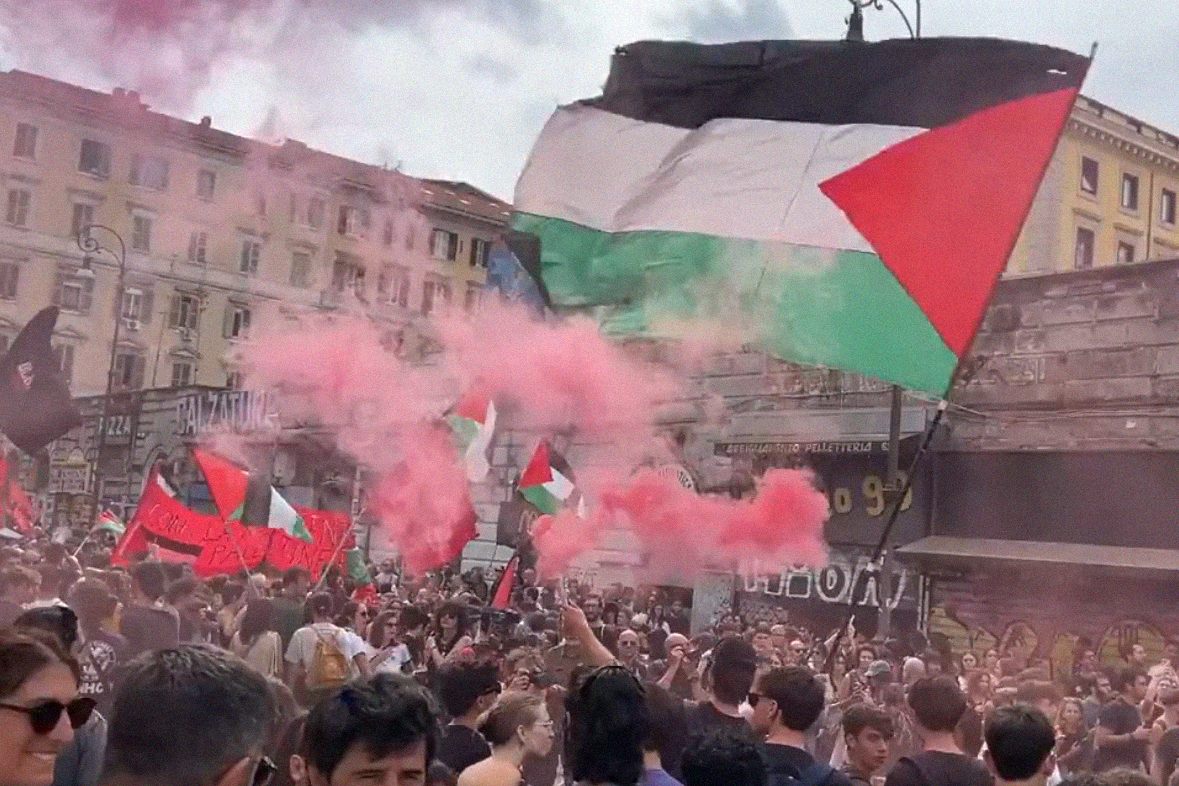
Establishment politics, the ‘democracy’ they have taught us ever since we went to school, is an intricate system designed not to convey the needs of the masses to those in power, but to filter them, and divert them into eternal waiting. It is an invitation to remain passive and to delegate the management of society to the upper echelons; that is, to the ruling class and its personnel.
The eruption of the masses onto the scene, which is always the defining element of great processes of social change, has torn the veil. We are no longer waiting, we are blocking everything to stop the genocide. And so, everything has changed.
Having established this, it is necessary to understand how this action can be carried out effectively. A good start is to look at the strengths of the movement so far and draw the necessary conclusions.
First, the slogan “let’s block everything” had a real effect because it was carried out, not by a small minority, but by mass action. We must therefore put an end once and for all to the idea that the movement is made up of a handful of isolated activists, and work to ensure that the mass participation seen in the streets spills over into schools, universities, and workplaces.
This means creating widespread assemblies in which to discuss our objectives, programme, and methods of struggle in a democratic and coordinated manner. The active involvement of the majority (or at least of a large proportion of the working class) is the basis for the success of the struggle.
Secondly, apart from briefly blocking roads or train stations, it was the strikes that really brought things to a standstill (on 22 September, especially in schools, and on 3 October more generally). Outside the general strikes, it was in the ports where ‘blocking everything’ was most effective, as it was the port workers themselves – workers located at strategic points in the supply routes for the Israeli military machine – that shut things down.
The workers must decide!
The example of the ports is instructive. There was no complete blockage of all activity, but a targeted blockage that stopped the loading of ships that were to carry war material to Israel.
This is a concrete example of a general concept: under capitalism, it is the workers who produce and distribute. Therefore, it is the workers themselves, if they organise, who can decide what to do and what not to do. Organised, they can take control and break with their normal condition of subordination to the directives of managers and bosses.
Workers’ control is not an abstract formula. It arises spontaneously whenever there is an upsurge in workers’ struggles. Italy has a tradition of factory councils, created by workers during the Biennio Rosso (Red Two Years) and then again in the 1960s and 1970s.
Workers at the port of Ravenna explained how they managed to identify containers containing weapons for Israel and thus selectively block them. In Taranto, the Eni refinery was blocked to prevent the loading of an oil tanker that was to carry fuel to the Israeli air force. These examples must be shared as widely as possible, so that workers in different companies can discuss how and where to apply workers’ control over production, starting with companies whose products and services are instrumental to the Israeli military machine.
Demonstrations and pickets outside strategic locations (today the ports, but it doesn’t stop there) can provide important support, but they must always aim to strengthen the mobilisation of workers inside these workplaces, not replace it.
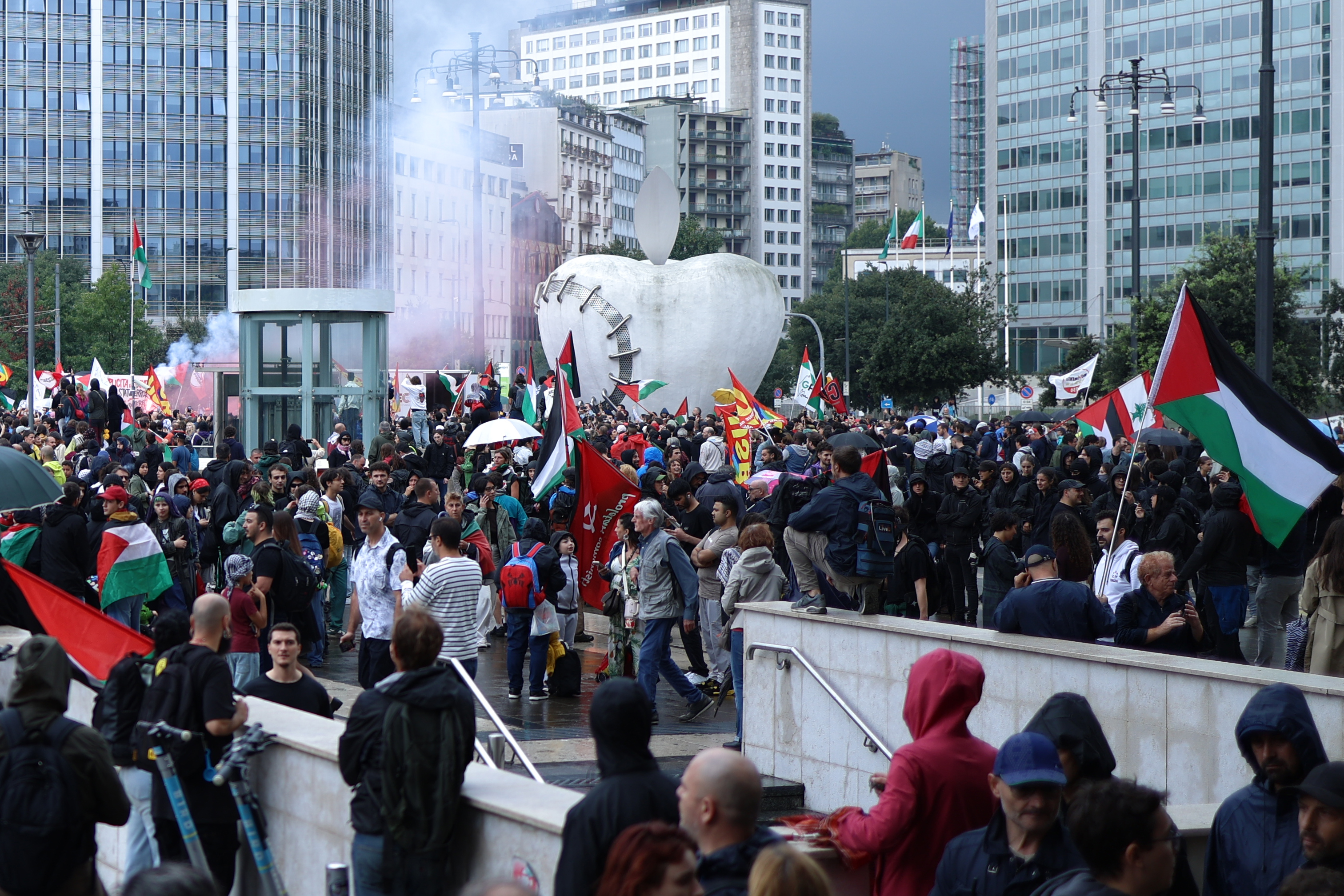
This is a reversal of the mobilisations of the early 2000s. Then, ‘disobbedienti’ (or more precisely ‘post-workerist’) groups theorised that the working class was obsolete, that strikes were a useless tool, and that blockades could only be understood as blockades of roads, stations, sometimes even companies – but always ‘from the outside’. This stance resulted in actions that were necessarily short-lived, without significant impact, and that excluded the organised labour movement.
Today, on the contrary, it was the workers themselves who, with their spontaneous, grassroots action, have caused the movement to overflow. It was they who forced the trade union leaderships, particularly that of the CGIL, to call a general strike. This too marks a reversal of the balance of power. After decades in which it seemed impossible to move the elephantine trade union bureaucracies, workers now know that it was they who brought the CGIL onto the battlefield. And that they can do it again.
This raises one final point: the mass organisations of the working class have the power to defeat the enemy, but the leadership of the movement cannot be delegated to leaders who do not even want to enter battle.
The slogan ‘let’s block everything’ comes from the movement in France. For years in France, the leadership of the main trade union, the CGT, has been calling for large days of action that have brought millions of people onto the streets. But, isolated from each other, they did not have the strength to defeat Macron and the French bourgeoisie.
‘Bloquons tout!’ is the slogan of the trade union left, and of the most advanced sectors of the movement. This includes our comrades in the French section of the RCI, Parti Communiste Révolutionnaire, who are calling for an all-out strike until Macron falls and a workers’ government is established.
The same idea must now be applied in Italy. 3 October must not remain an isolated day. The enemy is in trouble and we must not give him any respite. The grassroots mobilisation that led to the strike must be extended and structured, in workplaces and throughout the rest of society. It must put on the agenda a 48-hour general strike to bring down the Meloni government. It must take up a programme that combines the struggle to end genocide with a class offensive.
Let’s organise and block everything. Because it’s time to take everything back.
